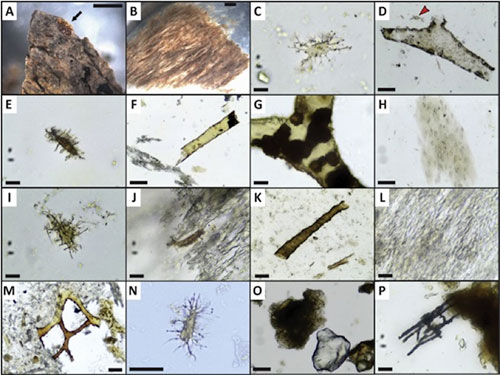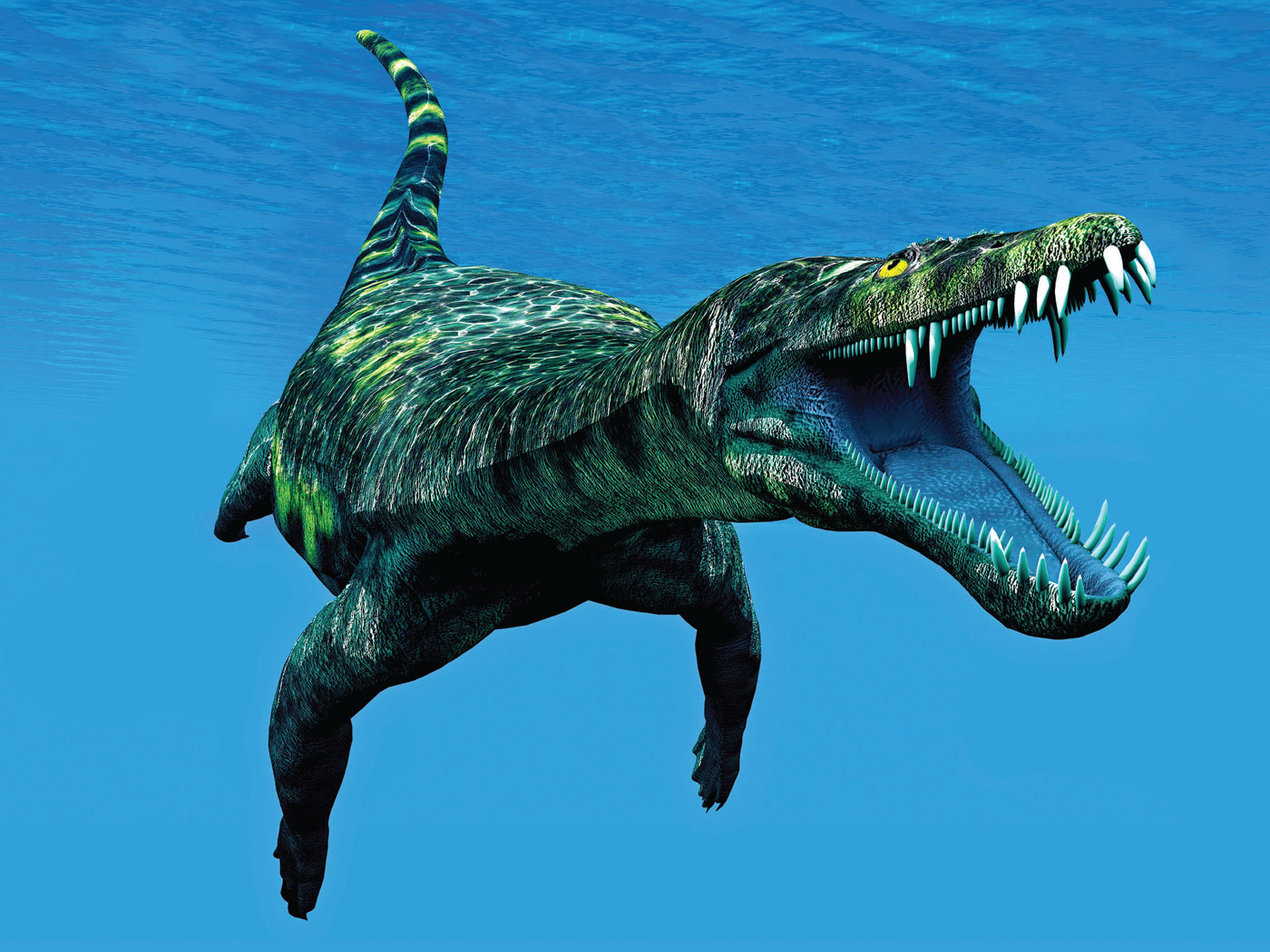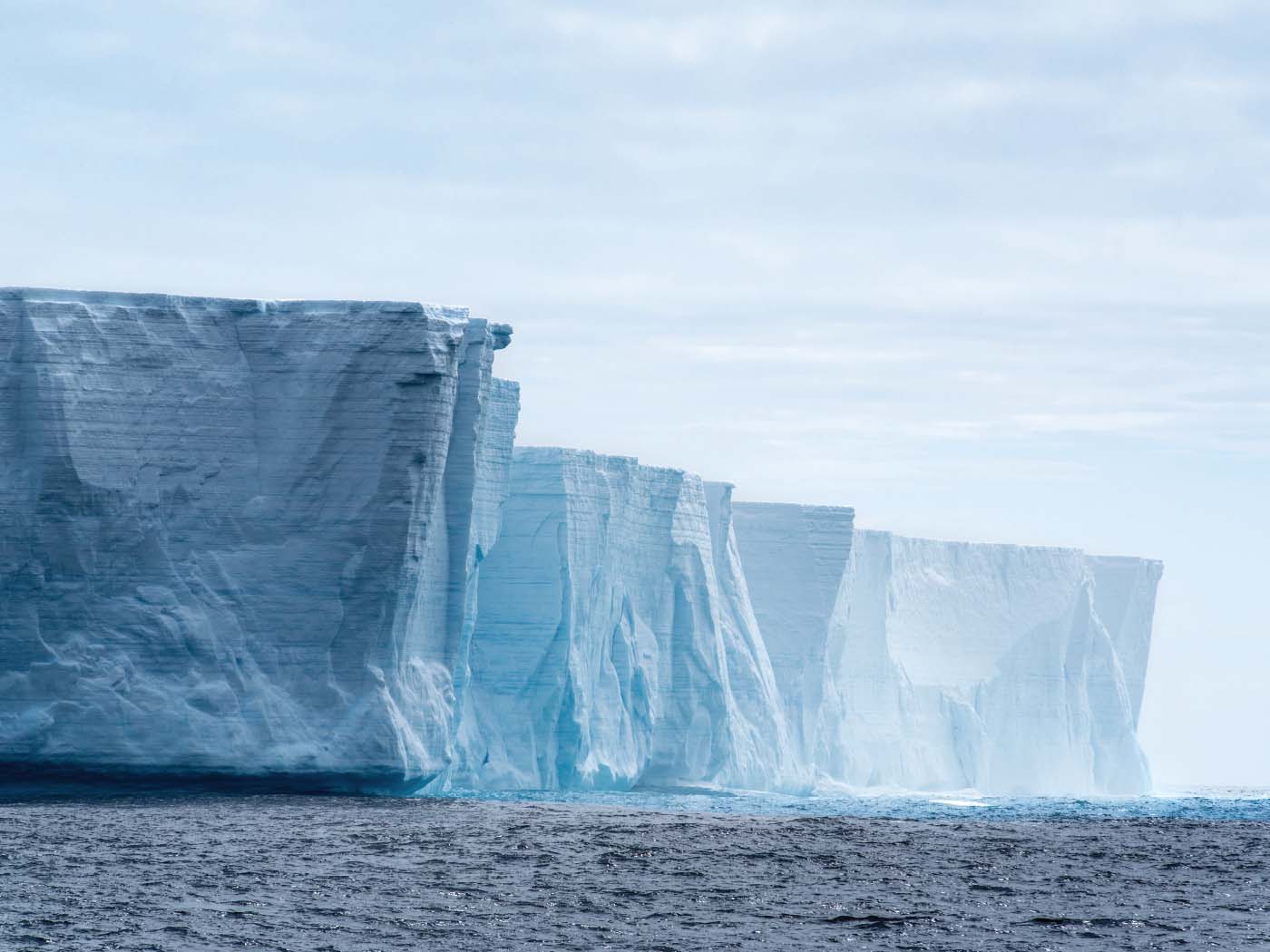A trio of scientists used sterile techniques to collect 17 dinosaur fossils. They searched deep inside the specimens for original, still-soft tissue remnants. What did they find?
Their Edmontosaurus (a species of hadrosaur) fossils came from where the Hell Creek Formation outcrops at the Standing Rock Hadrosaur Site in South Dakota. There, bits of hadrosaur bone poke through the sediment at a cut bank of the Grand River. The scientists published their finds in the journal Cretaceous Research.1
All told, 20 samples included bone, ossified (hardened) tendon fragments, and a lone tooth. The researchers collected samples from various depths, including a few that had already washed onto the surface. The team dissolved the hard mineral from their samples, then analyzed any soft tissues that remained. Their photographs showed bone cells called osteocytes, blood vessels, and connective tissues called fibrous matrix.

Ten of 20 had abundant osteocytes, three had none, and the rest had either frequent or few. Six of the 20 had abundant blood-vessel remnants, and four of them had abundant fibrous matrix.
The study authors wrote, “Demineralization of Edmontosaurus annectens bones from the Standing Rock Hadrosaur Site revealed abundant microstructures morphologically consistent with vertebrate osteocytes, blood vessels, and fibrous/proteinaceous matrix.”1 Vertebrate’s bones, not bacteria, create soft features with the colors, sizes, and shapes the researchers found.
The technical report didn’t address the obvious challenge of describing such short-lived biological materials within a long-age context. Like other researchers in the field, these authors suggested that tissues somehow stayed intact inside these fossils, while sitting in or on the ground since their burial millions of years ago.
What process could pause tissue decay at all, let alone for so long a time? The scientists cited high levels of iron in the surrounding sediments that may have formed a shield from bacteria. But bacteria are just the first line of attack on dead flesh. Chemistry is the more relentless attacker—yet it went unaddressed.
Iron helped form rounded lumps of the mineral siderite, found in the surrounding rocks and sometimes stuck to bone surfaces. They study authors wrote, “It is the growth of these siderite concretions that may, perhaps, have been the most crucial step.” Did they run an experiment that demonstrates how iron or iron-based minerals like siderite suspend the well-known process of tissue decay? No. This kind of conclusion belongs in the realm of speculation or even circular reasoning, not science.2 After all, experiments with iron show that it accelerates instead of stalls the decay of organic molecules like those found in cells and blood vessels.3.4
One way to explain these newfound soft dinosaur tissues, along with the dozens of similar finds already published, is to replace millions of years with just thousands of years. This shortened world timeline would certainly endanger evolutionary theory, but it would fit both the facts of soft tissues in dinosaur bones and the Bible’s timeline.
References
- Ullmann, P. V., S. H. Pandya, and R. Nellermoe. 2019. Patterns of soft tissue and cellular preservation in relation to fossil bone tissue structure and overburden depth at the Standing Rock Hadrosaur Site, Maastrichtian Hell Creek Formation, South Dakota, USA. Cretaceous Research. 99(2019): 1-13.
- The typical circular argument concludes that iron (or some other factor) must have preserved tissues for millions of years merely because the fossil is supposedly that old. Scientific conclusions should instead come from data, not from poor logic like this.
- Prousek, J. 2007. Fenton chemistry in biology and in medicine. Pure & Applied Chemistry. 79(12): 2325-2338.
- Winterbourn, C. C. 1995. Toxicity of iron and hydrogen peroxide: the Fenton reaction. Toxicology Letters. 82-83: 969-974.
Stage image: Hell Creek Formation
Dr. Brian Thomas is a Research Associate at the Institute for Creation Research and earned his Ph.D. in paleobiochemistry from the University of Liverpool.
Article posted on September 12, 2019.




















